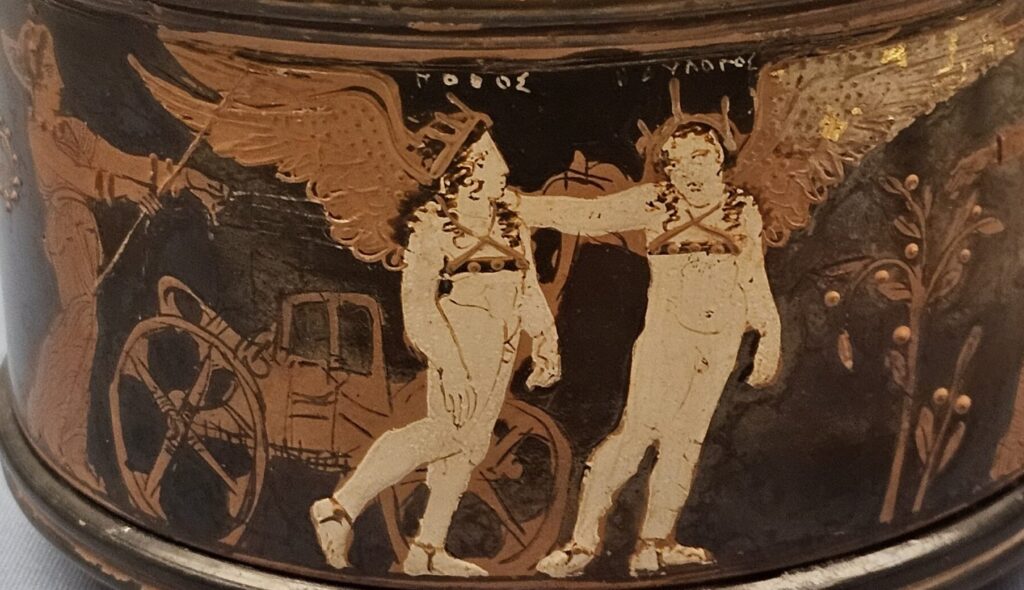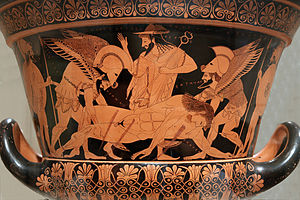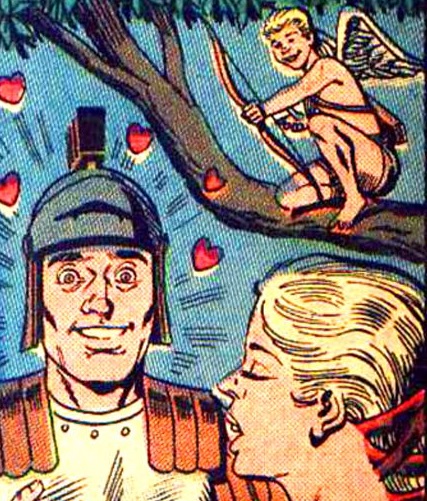For the ancient Greeks love wasn’t a singular thing. It manifested in a number of types and to help illustrate this Aphrodite had a retinue which represented the variations. They were often referred to as Erotes and here is a bit about them. If you are interested in more Aphrodite related content there’s a podcast episode, and a piece on the dangers of unrequited love.
Anteros
This erote is for any of you who have suffered the pain of unrequited love. According to Pausanias there was an altar in Athens specifically for Anteros. James Davidson (in his excellent book The Greeks & Greek Love) notes how he was more a balance to Eros and the pair often appeared together.
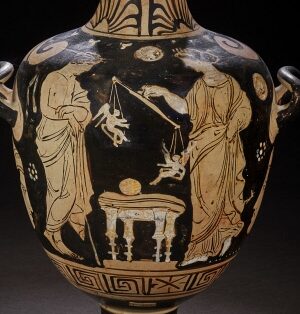
Eros
Probably the most famous of the erotes, Eros is mentioned by Hesiod as both an initial deity born at the outset of creation and one paired with Aphrodite at her birth. It’s plausible that the nature of Eros was redefined and brought into more mainstream view over time. The love associated with Eros was the most common, hence his pairing with Anteros. Though he may seem as if butter wouldn’t melt in his immortal mouth Eros was a very potent deity. Seneca in his work Phaedra noted how gods weren’t safe from his arrows. In Appollonius’ earlier work Argonautica (3rd century BC) it’s the arrows of Eros which cause Medea to fall in love with Jason of Argonaut fame.
Below image shows Eros on a ladder and you might think he was being lazy. However, this is thought to refer to the Adonia, a festival of Adonis in honour of Aphrodite. This festival involved women using ladders to get on their rooftops to plant gardens in honour of Adonis.
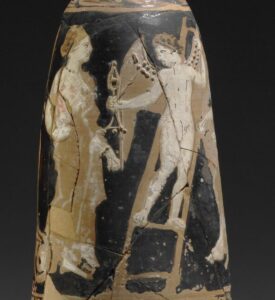
Hedylogos
This erote doesn’t feature a great deal but their name translated along the lines as ‘sweet talker’ or ‘flatterer’. In the image below he features alongside Pothos with Aphrodite and a carriage behind them. It looks as if they may have been drawing Aphrodite’s carriage, well she was a hard task mistress!
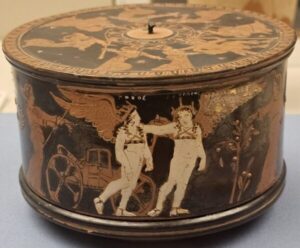
Hermaphroditos
The child of Hermes and Aphrodite this erote takes their name from both parents. Ovid’s Metamorphoses gives a myth in which a nymph called Salmakis spied him whilst he was bathing in her spring and prayed that she could join him forever. As a result the two were merged into one deity and in art Hermaphroditos was depicted with both sets of genitalia.
Exactly how Hermaphroditos was worshipped lacks much detail. In 1995 an inscription was discovered near Bodrum harbour in modern day Turkey. Though referred to as an inscription it was a poem which had been professionally carved into the limestone and ran across two columns of text. This poem was an invocation to Aphrodite and Hermaphroditos was referenced in relation to an area whuch might surprise – marriage, specifically the laws of matrimony (as the inventor no less). The inscription is dated to the Hellenistic period so presumably Hermaphroditos had a link with the legal aspect of marriage by this point.
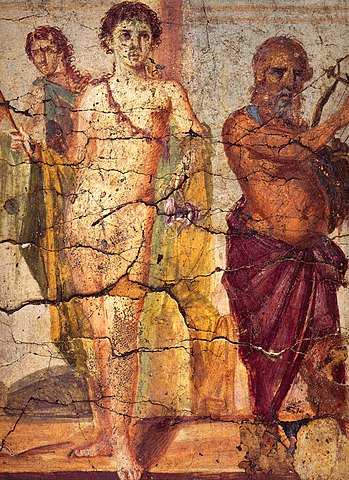
Fresco from Pompeii with Hermaphroditos (on the left without the beard).
Himeros
Hesiod refers to both Eros and Himeros at the birth of Aphrodite which may mean they were part of the wider birth or she bore them immediately. Davidson defines the remit of Himeros as ‘captivation’ and ‘a love attack’. He continues with a good analogy – it’s the effect you’ll have on people when wearing a particular perfume or garment which causes gasps from those around.
As per the below – there may be serious consequences. The image below comes from a 5th century vase and depicts Himeros persuading Paris to fall for Helen.

Hymenaios
Where Hermaphroditos was linked to weddings this erote was presumably at them. Hymenaeus was concerned with the wedding hymn sung as the bride was escorted to her new home. The earliest references to him are either in a fragment of Sappho (frag 111), Pindar’s Third Pythian or in Trojan Women by Euripides. In Aristophanes’ Peace the chorus sing his name.
On the below pyxis (cosmetic box) Hebe and Heracles are married with Hymenaios next to Heracles holding a wedding torch. This was often how he could be identified.
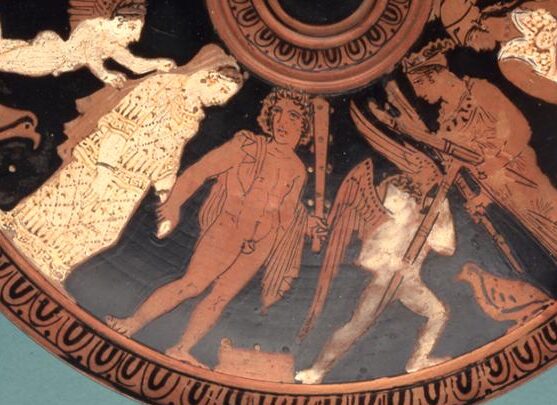
Pothos
You may have noted Pothos depicted alongside Hedylogos earlier in an image. Pothos isn’t easy to define, though it can fit a generalised definition of ‘longing’. However, it’s not always a specific person (though that might be the case) Davidson points out how it could be something yet to be obtained, for example a person missing ‘the right one’ rather versus an ex or someone tangible.
Pausanias wrote that he was represented in the temple of Aphrodite at Megara. Pliny the Elder wrote that the famed sculptor Scopas carved a statue of Pothos at Samothrace.
Reading list
Theoi.com Erotes.
Davidson, J. The Greeks and Greek Love.
Isager, S. The Pride of Halikarnassos. Editio Princeps of an Inscription from Salmakis

